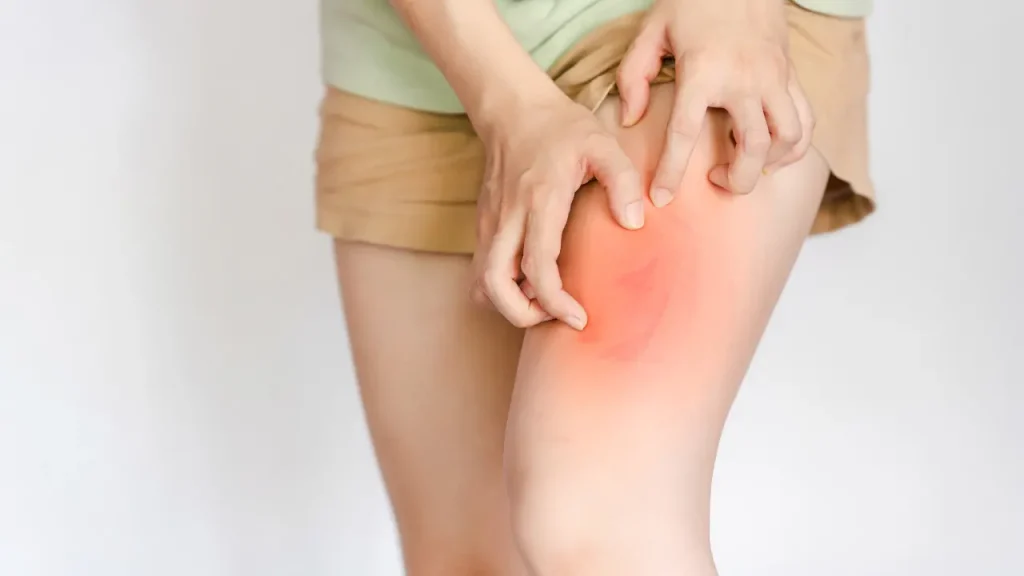The culinary, medical, and therapeutic benefits of wild mint (mentha arvensis), a perennial plant of the lamiaceae family, have been valued by many cultures all over the world for centuroes. The aroma, flavor, and medicinal properties of wild mint are due to its main chemical components. The goal of this article is to give readers a thorough explanation of the chemistry, health advantages, recommended dosage, side effects, possible drug interactions, and ethical applications of wild mint as a nutritional supplement.
You May Also Like:
The Best Supplements for Brain Injury: 5 Top Brands Reviewed
Finding the Best Supplements for Brain Fog After COVID: 5 Top Brands Reviewed
Wild Mint: Benefits, Dosage, Side Effects, Drug Interactions, And Other Important Information is an original (NootropicsPlanet) article.
Nature of Wild Mint
Wild mint (mentha arvensis) , is a perennial herbaceous plant that is native to Europe, Asia, and North America. It flourishes in moist, humid areas like marshes, riverbanks, and meadows. The plant has opposite, lanceolate leaves with serrated margins, and it can reach a height of up to 24 inches. The tiny, tubular flowers range in hue from pale pink to violet and are in bloom from June through September.
Rhizomes help the spread of wild mint, allowing it to grow into thick colonies. Wild mint is able to outcompete other plants in its native area due to this invasive growth tendency. This ability, however, also makes it a tough plant that is simple to grow in gardens and containers.
Health Benefits of Wild Mint
Effects on Antioxidants and Inflammation:
Wild mint contains antioxidant and anti-inflammatory phenolic components such as rosmarinic acid, caffeic acid, and flavonoids such as luteolin and hesperidin. These chemicals scavenge free radicals in the body, lowering oxidative stress and inflammation. According to research, the antioxidant and anti-inflammatory properties of wild mint can play a role in the prevention and treatment of a variety of chronic diseases, including cardiovascular disease, neurological disorders, and certain types of cancer.
Antibacterial Activity:
Wild mint essential oils have been proven to exhibit antibacterial activity against a variety of bacteria, fungi, and viruses. The primary function of the antibacterial activities involves the rupture of microbial cell membranes and the inhibition of key enzymes, which results in cell death. The antibacterial properties of wild mint may contribute to its traditional usage in the treatment of respiratory infections, gastrointestinal illnesses, and oral health issues.
Wild mint has long been used to treat gastrointestinal disorders such as indigestion, flatulence, and irritable bowel syndrome. The presence of menthol, which relaxes the smooth muscles of the gastrointestinal system and lowers spasms, is responsible for its carminative and antispasmodic properties. Furthermore, wild mint stimulates the production of bile and digestive enzymes, which aids in nutrient digestion and absorption.
Analgesic and Sedative Effects:
The principal bio-active ingredient in wild mint, menthol, has been demonstrated to have analgesic and anesthetic effects. It causes the chilling feeling and pain alleviation by activating the transient receptor potential cation channel subfamily M member 8 (TRPM8) receptors. The topical application of wild mint extracts or essential oils can help relieve pain and inflammation caused by illnesses like arthritis, muscle pain, and headaches.

Chemistry of Wild Mint
Essential oils, which are predominantly made of monoterpenes and sesquiterpenes, make up the majority of the bio-active components in wild mint. These substances include, among others, 1,8-cineole, menthol, menthone, pulegone, limonene, and carvone. These volatile chemical components give wild mint its distinctive flavor and perfume and support its therapeutic and medicinal effects.
Physiological Properties of Wild Mint
Wild mint has a variety of bio-active substances that act on the body and brain in different ways. Understanding these pathways can help explain how wild mint might be used therapeutically.
Menthol
The main bio-active component of wild mint, menthol, interacts with TRPM8 receptors on transient receptor potential cation channel subfamily M channels. These receptors play a role in temperature detection and cooling sensation mediation. The analgesic and anesthetic properties of menthol are influenced by the activation of TRPM8 receptors, which results in the suppression of pain signals in the peripheral nervous system.
Compounds That are Antioxidant and Anti-inflammatory:
Through the neutralization of free radicals and the control of the production of pro-inflammatory cytokines, phenolic compounds, including rosmarinic acid, caffeic acid, and flavonoids, have antioxidant and anti-inflammatory properties. These substances aid in the reduction of oxidative stress and inflammation, both of which are linked to many chronic disorders.
Microbiological Activity:
The essential oils of wild mint, especially menthol, menthone, and pulegone, damage the integrity of microorganisms’ cell membranes and suppress vital enzymes, which results in cell death. This antimicrobial activity may be a factor in wild mint’s ability to treat infections effectively and preserve oral health.
Effects on the Digestive System:
The ability of menthol to relax the smooth muscles in the gastrointestinal tract is thought to be the cause of its carminative and antispasmodic actions. Wild mint also promotes bile and digestive enzyme release, which aids with digestion and nutritional absorption.


Optimal Dosage and Administration
The ideal dosage of wild mint varies according to your age, state of health, and particular medical condition. The following dosages are generally regarded as secure for adults:
• Infusion: Taken 2-3 times daily, 1-2 teaspoons of dried wild mint leaves steeped in a cup of boiling water for 10 minutes.
• Essential Oil: For aromatherapy, apply directly or inhale 1-2 drops diluted in a carrier oil or lotion.
Before taking wild mint as a nutritional supplement, it is imperative to speak with your doctor, especially if you are pregnant, nursing, have children, have a pre-existing ailment, or are taking medication.
Side Effects and Precautions
When used topically or in moderation, wild mint is generally regarded as harmless. But some people might encounter side effects like allergic reactions, heartburn, or skin irritation. When using wild mint, the following safety precautions should be taken into account:
• Allergic Reactions: People who are allergic to members of the lamiaceae family of plants, such as oregano, basil, or lavender, may also be allergic to wild mint. Skin rashes, breathing problems, throat swelling, and difficulty breathing are all indications of an allergic reaction. Stop using it immediately and seek medical help if this happens.
• Heartburn: Due to its relaxing effect on the lower esophageal sphincter, excessive ingestion of wild mint, especially if you are someone with gastroesophageal reflux disease (GERD), may increase symptoms of heartburn.
• Pregnancy and Breastfeeding: While using wild mint as a nutritional supplement is generally safe during pregnancy and while nursing, some of its components, such as pulegone, may have negative effects on the developing fetus.


Potential Substance Interactions
Certain medications may interact with wild mint, changing their efficacy or possibly having negative effects. Among the possible interactions are:
• Anticoagulant and Antiplatelet Drugs: Taking wild mint along with anticoagulant or antiplatelet drugs like warfarin, aspirin, or clopidogrel may raise the risk of bleeding. If you are taking these medications, talk to your doctor before using wild mint.
• Diabetes Drugs: Wild mint may reduce blood sugar levels, thereby increasing the effectiveness of diabetes drugs like insulin or metformin. If you need to alter your dose, regularly monitor your blood sugar levels and talk to your doctor.
• Antihypertensive Drugs: Combining wild mint with anti-hypertensive drugs like lisinopril or amlodipine may result in an abnormal reduction of blood pressure. If you are taking these medications, talk to your doctor before using wild mint.
Best Responsible Uses of Wild Mint
Take into account the following recommendations to guarantee the safe and successful use of wild mint as a dietary supplement:
• Select top-notch goods: To guarantee purity, potency, and safety, use wild mint supplements or essential oils from reliable sources. Choose products that have passed independent testing and verification.
• Take the dosage as directed: Follow the recommended dosages for wild mint and speak with a doctor for advice specific to your needs and current health situation.
• Recognize possible interactions: To prevent any interactions or side effects, speak with your healthcare provider before using wild mint if you are taking medication or have pre-existing medical issues.
• Apply topical medications with caution: Before using wild mint essential oil on your skin, test a small patch of skin first. To reduce the possibility of skin irritation, dilute it with a carrier oil or lotion.
Wild Mint:
Conclusion
Wild mint can be very beneficial to your overall health. If you suffer from indigestion or gastrotintestinal issues, there is no better natural remedy for those stoamch pains than wild mint. But, like any other drug or nutritional supplement, there are always potential side effects to be aware of. Wild mint essential oil topical application, particularly in concentrated doses or in those with sensitive skin, may result in skin irritation or contact dermatitis. Before using wild mint oil, it is advised to conduct a patch test and to diluted it in a carrier oil or lotion.


References:
- Antioxidant and anti-inflammatory activities of wild mint. Retrieved from: https://www.ncbi.nlm.nih.gov/pmc/articles/PMC3249907/
- Chemical composition and antimicrobial activity of Mentha arvensis L. essential oil. Retrieved from: https://www.scielo.br/scielo.php?script=sci_arttext&pid=S0102-695X2010000300020
- Menthol: A review of its thermoreceptor-mediated cooling effects on pain and inflammation. Retrieved from: https://www.liebertpub.com/doi/10.1089/ars.2010.3306?url_ver=Z39.88-2003&rfr_id=ori:rid:crossref.org&rfr_dat=cr_pub%20%200pubmed
- Wild mint (Mentha arvensis) as a functional food: A comprehensive review. Retrieved from: https://www.researchgate.net/publication/345349564_Wild_mint_Mentha_arvensis_as_a_functional_food_A_comprehensive_review
- Efficacy and safety of Mentha arvensis oil for gastrointestinal disorders. Retrieved from: https://academicjournals.org/journal/JMPR/article-abstract/5E26A7A14056
Important Note: The information contained in this article is for general informational purposes only, and should not be construed as health or medical advice, nor is it intended to diagnose, prevent, treat, or cure any disease or health condition. Before embarking on any diet, fitness regimen, or program of nutritional supplementation, it is advisable to consult your healthcare professional in order to determine its safety and probable efficacy in terms of your individual state of health.
Regarding Nutritional Supplements Or Other Non-Prescription Health Products: If any nutritional supplements or other non-prescription health products are mentioned in the foregoing article, any claims or statements made about them have not been evaluated by the U.S. Food and Drug Administration, and such nutritional supplements or other health products are not intended to diagnose, treat, cure, or prevent any disease.
